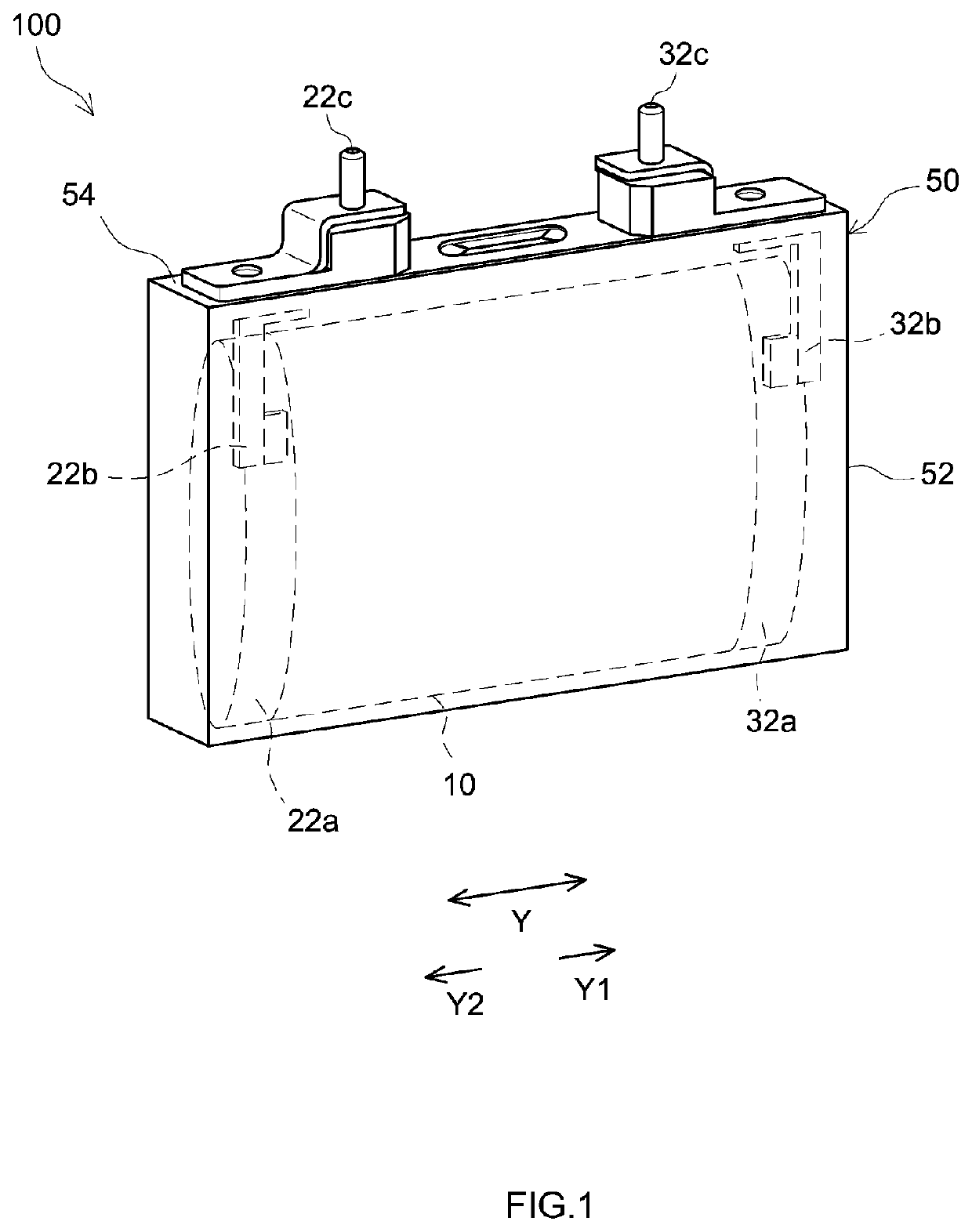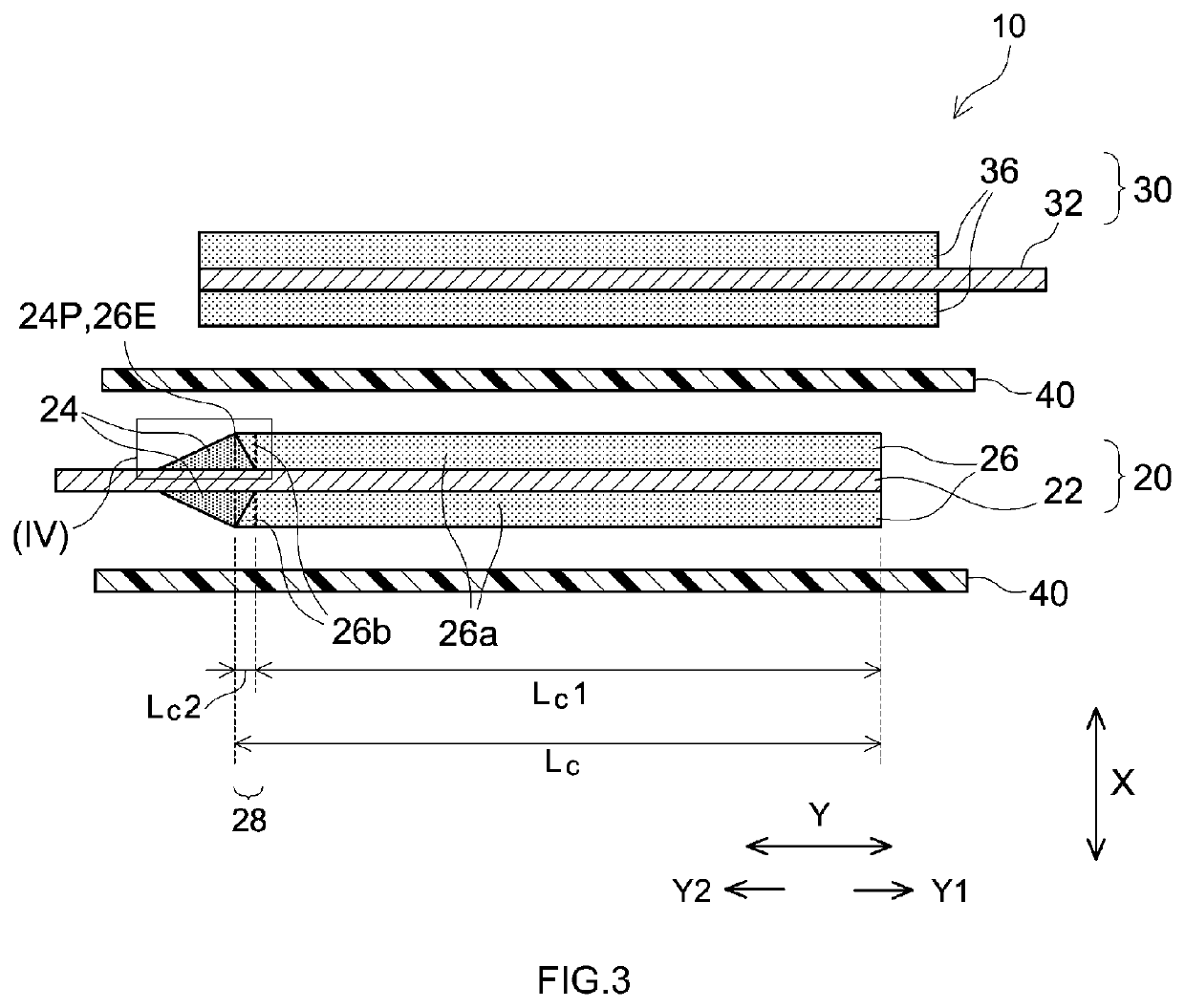Non-aqueous electrolyte secondary battery
a secondary battery and electrolyte technology, applied in the direction of cell components, final product manufacturing, sustainable manufacturing/processing, etc., can solve the problem of easy metal deposition on the negative electrode, and achieve the effect of minimizing the charging and discharging reaction on the end surface of the active material layer of the positive electrode, reducing metal deposition, and minimizing elution of metallic elements
- Summary
- Abstract
- Description
- Claims
- Application Information
AI Technical Summary
Benefits of technology
Problems solved by technology
Method used
Image
Examples
Embodiment Construction
[0022]Hereinafter, some embodiments of the technology disclosed here will be described. Here, of course, the embodiments described here are not intended to limit the technology disclosed here. Components other than those particularly mentioned in this specification that are necessary for implementing the technology disclosed here (for example, a general configuration and a production process of a non-aqueous electrolyte secondary battery that does not characterize the technology disclosed here) can be recognized by those skilled in the art as design matters based on the related art in the field. The technology disclosed here can be implemented based on content disclosed in this specification and common general technical knowledge in the field.
[0023]Here, in this specification, “secondary battery” generally refers to a power storage device that can be repeatedly charged and discharged. For example, a lithium ion secondary battery, a nickel metal hydride battery, a lithium ion capacit...
PUM
| Property | Measurement | Unit |
|---|---|---|
| inclination angle | aaaaa | aaaaa |
| inclination angle | aaaaa | aaaaa |
| width | aaaaa | aaaaa |
Abstract
Description
Claims
Application Information
 Login to View More
Login to View More - R&D
- Intellectual Property
- Life Sciences
- Materials
- Tech Scout
- Unparalleled Data Quality
- Higher Quality Content
- 60% Fewer Hallucinations
Browse by: Latest US Patents, China's latest patents, Technical Efficacy Thesaurus, Application Domain, Technology Topic, Popular Technical Reports.
© 2025 PatSnap. All rights reserved.Legal|Privacy policy|Modern Slavery Act Transparency Statement|Sitemap|About US| Contact US: help@patsnap.com



